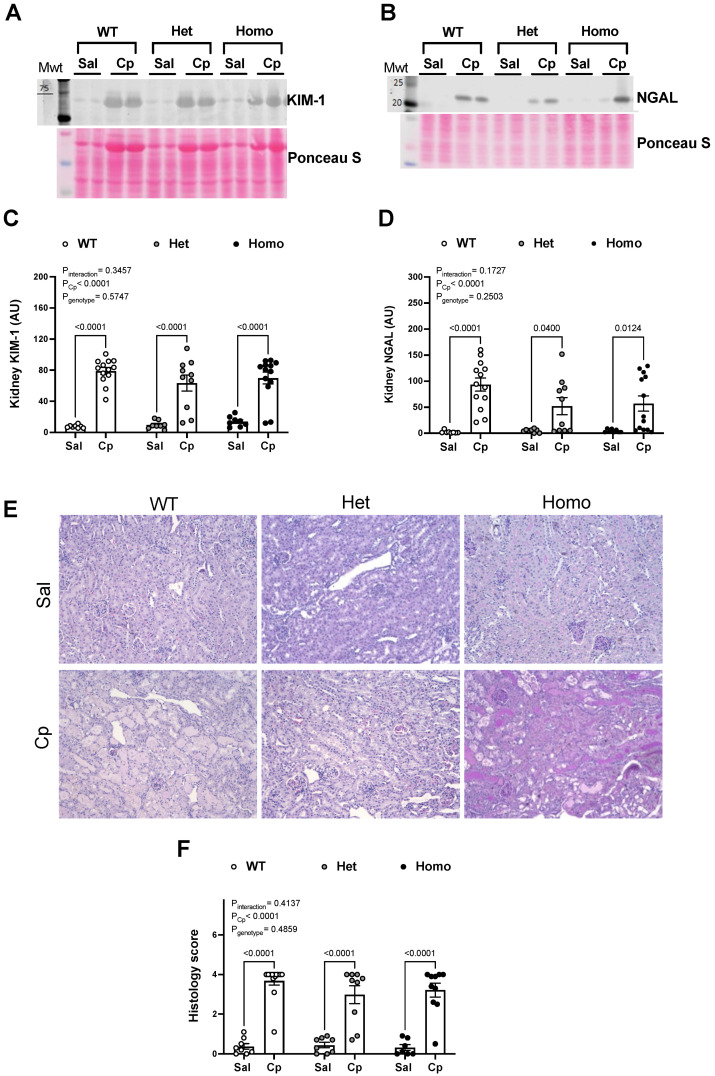Figure 3.
Cisplatin-induced rise in kidney levels and histological indexes of renal tubular injury. Representative images for Western blots on total kidney lysates for kidney injury molecule 1 (KIM-1, (A)) and neutrophil gelatinase-associated lipocalin (NGAL, (B)) measured on day 3 after cisplatin (Cp, 20 mg/kg) or saline injections in male mice, homozygous (homo) and heterozygous (het) knockout for GPER1 gene, and wild-type (WT) littermates. Densitometric values (AU, arbitrary units) for kidney levels of KIM-1 (C) and NGAL (D) were normalized to the Ponceau S staining. Representative histological images of periodic acid-Schiff (PAS)-stained kidney sections from male homo, het, and WT mice on day 3 after Cp or saline injections are shown (E). Scale bar = 200 µm. Quantification using a semiquantitative scale (0–4) of indexes of renal injury is demonstrated (F). Data are presented as mean ± SEM (n = 7–13 mice/group). Statistical comparisons were performed by two-way ANOVA with Sidak’s post hoc test for multiple comparisons (C,D,F). p values for ANOVA and post hoc test results are displayed on the figures. AU, arbitrary units; Cp, cisplatin; Het: heterozygous knockout for GPER1 gene; Homo, homozygous knockout for GPER1 gene; KIM-1, kidney injury molecule 1; NGAL, neutrophil gelatinase-associated lipocalin; PAS, periodic acid Schiff; Sal, saline; WT, wild-type.

